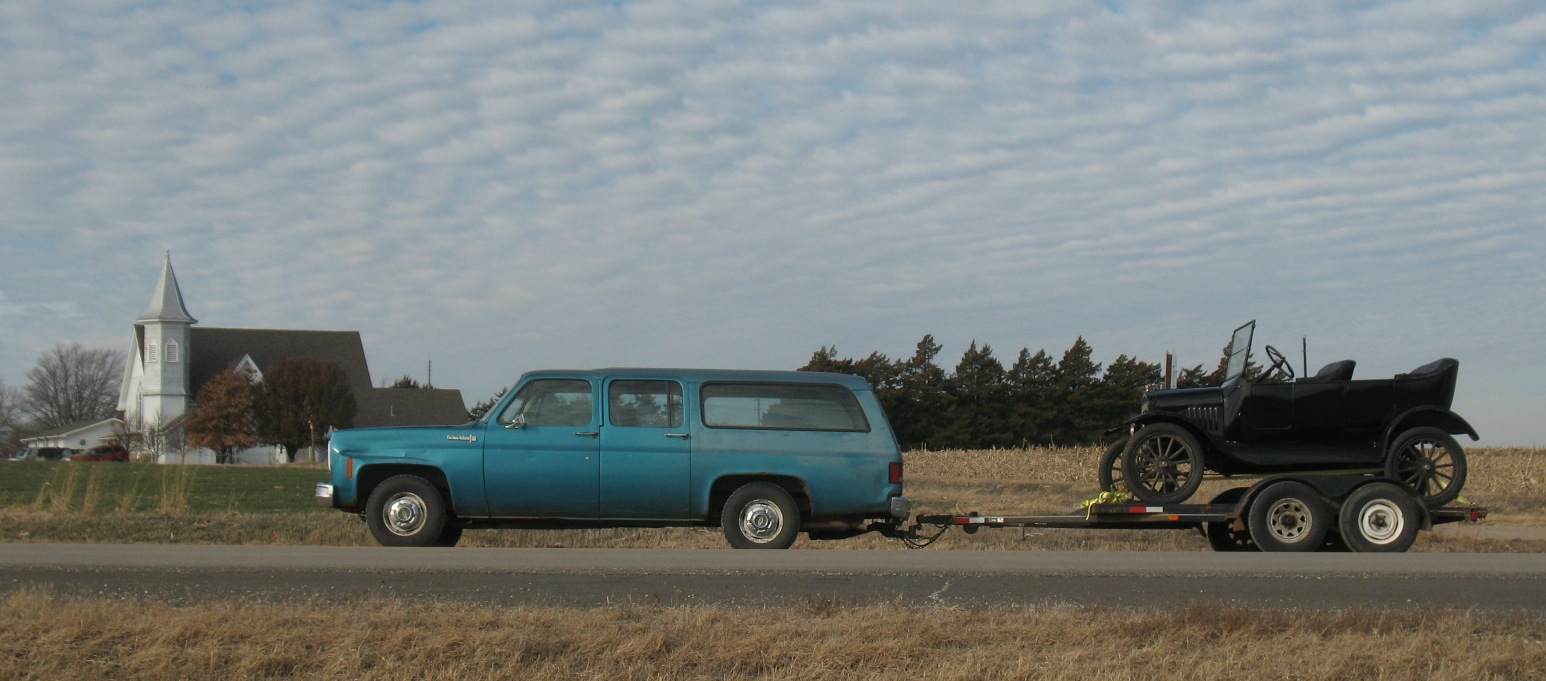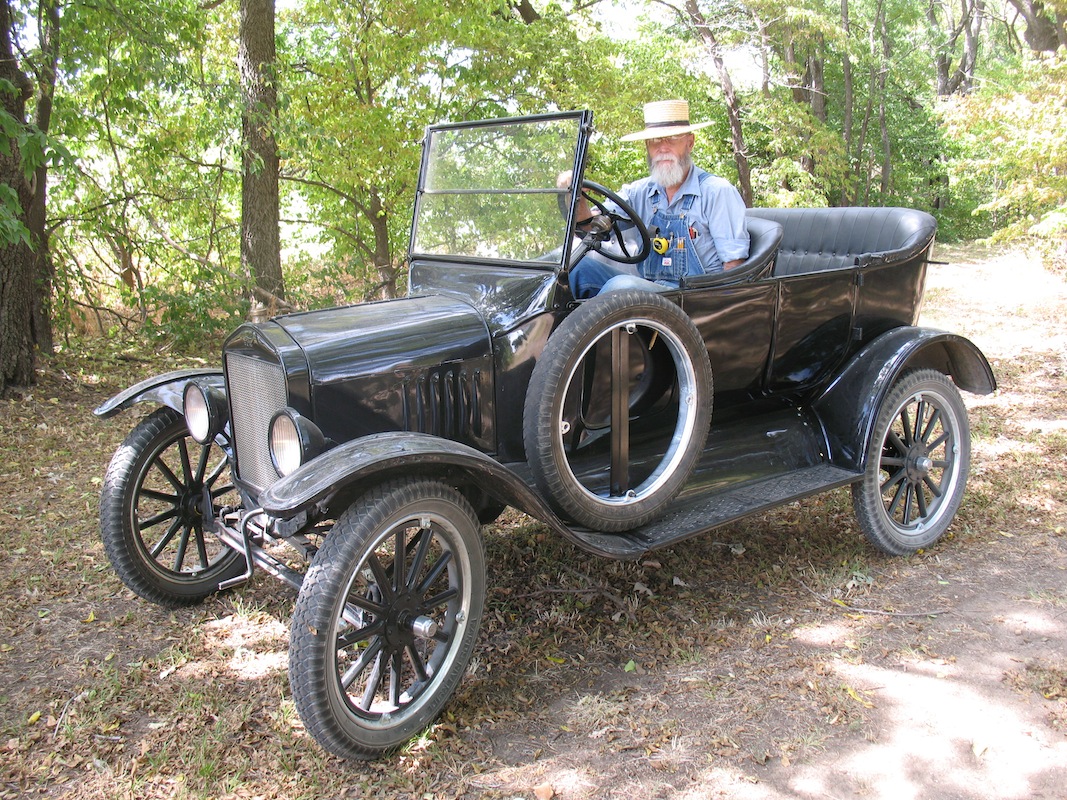
| This has
been my learning car.
After buying my Model TT truck project in November of 2007, I went to
work on a frame-up restoration. It soon dawned on me that the old
saying that everything takes longer than you think it will applies in
spades to this kind of undertaking. In reading the MTFCA forum for
restoration tips and information, I came across a discussion of what's
the best thing to buy for a first Model T. One writer recommended
getting a car that doesn't need much work to get it running and ready
to drive. This has two advantages. First, you can enjoy driving it
right away instead of waiting for years. Second, it costs less. While a
big project may be cheap to start, in the long run it's going to cost
more than the finished vehicle will be worth. Better to let somebody
else take the financial hit and sell you a car for less than he spent
on it. The first point especially appealed to me, and I started watching For Sale ads. It wasn't long before I found a 1923 touring for sale at a price that seemed reasonable, and within a day's drive. After receiving emailed pictures of the car, I thought it looked very good indeed. So I hitched up the trailer and headed for Lincoln, Nebraska. I have to confess that if at that time I'd known a few more things to check I would have pointed out some flaws and tried to negotiate a lower price. But in my blissful ignorance I forked over the asking price and hauled the car home. It turned out to be a 20-20 restoration. From twenty feet away, driving by at twenty miles an hour, it looks great. But up close and standing still you soon find things that aren't right. In this case, the guys who "restored" the body had done a moderately good job. The upholstery was good, the paint job was not great but adequate, and most of the features were right for 1923. But it turned out they had ignored the poor thing's mechanical needs and got some details wrong in the body. The cosmetic errors like Phillips screws and other incorrect fasteners, plastic-insulated wiring, etc., are minor things easily corrected over time. The mechanical shortcomings were more serious. The first thing to fix was the carburetor. I noticed gasoline dripping out. The reason turned out to be that the carb had slept with the fishes. The bowl had holes rusted through it. So rebuilding a Holley NH carburetor was the first lesson this car taught me. With the carburetor fixed I was able to drive the vehicle, but I found the loose steering made for a driving experience that was just too exciting to suit me. That led to replacing all the front end bushings, spindle pins, and shackles, all of which were badly worn. The same turned out to be true for the rear suspension. This car came with non-demountable clincher wheels. Those were standard equipment on 1923 open cars, but I wanted to upgrade to demountables, which were a 1923 option. It's a good thing I made the change when I did, because I found that the bearings in the old front wheels were shot. A big lesson came when I was driving the car and one of the rear wheels locked up. I found that the brake shoe was in pieces inside the drum. At the time I didn't realize what had caused this, but reading the MTFCA forum enlightened me on the famous rear axle thrust washer problem and led to the largest job I've done on this car so far, rebuilding the rear axle. This car has also taught me about the Model T cooling system. I've applied techniques picked up from the forum to correct overheating, but the biggest corrective technique hasn't happened yet. That's installing a new radiator. The old one that's on the car has been patched up more than once and still leaks, and doesn't cool the way it should, so a new radiator is on my list. A future lesson I intend to learn from this car is how to restore top bows and install a new top. I expect there will be other lessons too, but for me learning how to work on a Model T is one of the interesting and enjoyable features of owning one. |
 |